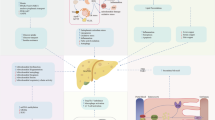Abstract
Advanced glycation end products (AGEs) and the receptor RAGE interaction is involved in nonalcoholic fatty liver disease (NAFLD). Although exogenously administered soluble RAGE (sRAGE) has been shown to block the harmful effects of AGEs in animal models, there is still controversy about the role of sRAGE in humans. We examined here which anthropometric, metabolic and clinical variables were independent correlates of sRAGE levels in NAFLD patients. The study involved 77 biopsy-proven, unmedictaed NAFLD patients (44 male and 33 female) with a mean age of 43.4±13.0 years old. We examined which anthropometric, metabolic and clinical variables, including liver steatosis and fibrosis markers, are independently associated with serum levels of sRAGE. Mean serum levels of sRAGE were 710.7±290.2 pg/mL. Univariate analysis revealed that waist circumference (inversely), hemoglobin (inversely), number of white blood cells (inversely), total-bilirubin (inversely), free fatty acid (inversely), ferritin (inversely), and HbA1c (inversely) were significantly correlated with serum levels of sRAGE. In multiple stepwise regression analysis, waist circumference (p<0.01, inversely) and hemoglobin (p<0.01, inversely) were independently associated with serum levels of sRAGE (R2=0.176). The present study reveals that low serum levels of sRAGE are independently associated with waist circumference and hemoglobin in patients with NAFLD.
Similar content being viewed by others
References
Yamagishi S, Imaizumi T: Diabetic vascular complications: Pathophysiology, biochemical basis and potential therapeutic strategy. Curr Pharm Des 2005; 11: 2279–2299
Hyogo H, Yamagishi S: Advanced glycation end products (AGEs) and their involvement in liver disease. Curr Pharm Des 2008; 14: 969–972
Kimura Y, Hyogo H, Yamagishi S, et al: Atorvastatin decreases serum levels of advanced glycation endproducts (AGEs) in nonalcoholic steatohepatitis (NASH) patients with dyslipidemia: clinical usefulness of AGEs as a biomarker for the attenuation of NASH. J Gastroenterol 2010; 45: 750–757
Iwamoto K, Kanno K, Hyogo H, et al: Advanced glycation end products enhance the proliferation and activation of hepatic stellate cells. J Gastroenterol 2008; 43: 298–230
Yamagishi S, Matsui T: Soluble form of a receptor for advanced glycation end products (sRAGE) as a biomarker. Front Biosci (Elite Ed) 20101; 2: 1184–1195
Yamagishi S, Adachi H, Nakamura K, et al: Positive association between serum levels of advanced glycation end products and the soluble form of receptor for advanced glycation end products in nondiabetic subjects. Metabolism 2006; 55: 1227–1231
Yilmaz Y, Ulukaya E, Gul OO, Arabul M et al: Decreased plasma levels of soluble receptor for advanced glycation endproducts (sRAGE) in patients with nonalcoholic fatty liver disease. Clin Biochem 2009; 42: 802–807
Nakamura K, Adachi H, Matsui T, et al: Independent determinants of soluble form of receptor for advanced glycation end products in elderly hypertensive patients. Metabolism 2009; 58: 421–425
Unoki H, Bujo H, Yamagishi S, et al: Advanced glycation end products attenuate cellular insulin sensitivity by increasing the generation of intracellular reactive oxygen species in adipocytes. Diabetes Res Clin Pract 2006; 76: 236–244
Semba RD, Ferrucci L, Sun K, et al: Elevated serum advanced glycation end products and their circulating receptors are associated with anaemia in older community-dwelling women. Age Ageing 2009; 38: 283–289
Iwata H, Ukeda H, Maruyama T, et al: Effect of carbonyl compounds on red blood cells deformability. Biochem Biophys Res Commun 2004; 321: 700–706
Wautier JL, Wautier MP, Schmidt AM, et al: Advanced glycation end products (AGEs) on the surface of diabetic erythrocytes bind to the vessel wall via a specific receptor inducing oxidant stress in the vasculature: a link between surface-associated AGEs and diabetic complications. Proc Natl Acad Sci USA 1994; 91: 7742–7746
Author information
Authors and Affiliations
Corresponding author
About this article
Cite this article
Hyogo, H., Yamagishi, Si., Maeda, S. et al. sRAGE is associated with low waist circumference and Hb levels in NAFLD. cent.eur.j.med 8, 830–834 (2013). https://doi.org/10.2478/s11536-013-0224-z
Received:
Accepted:
Published:
Issue Date:
DOI: https://doi.org/10.2478/s11536-013-0224-z




